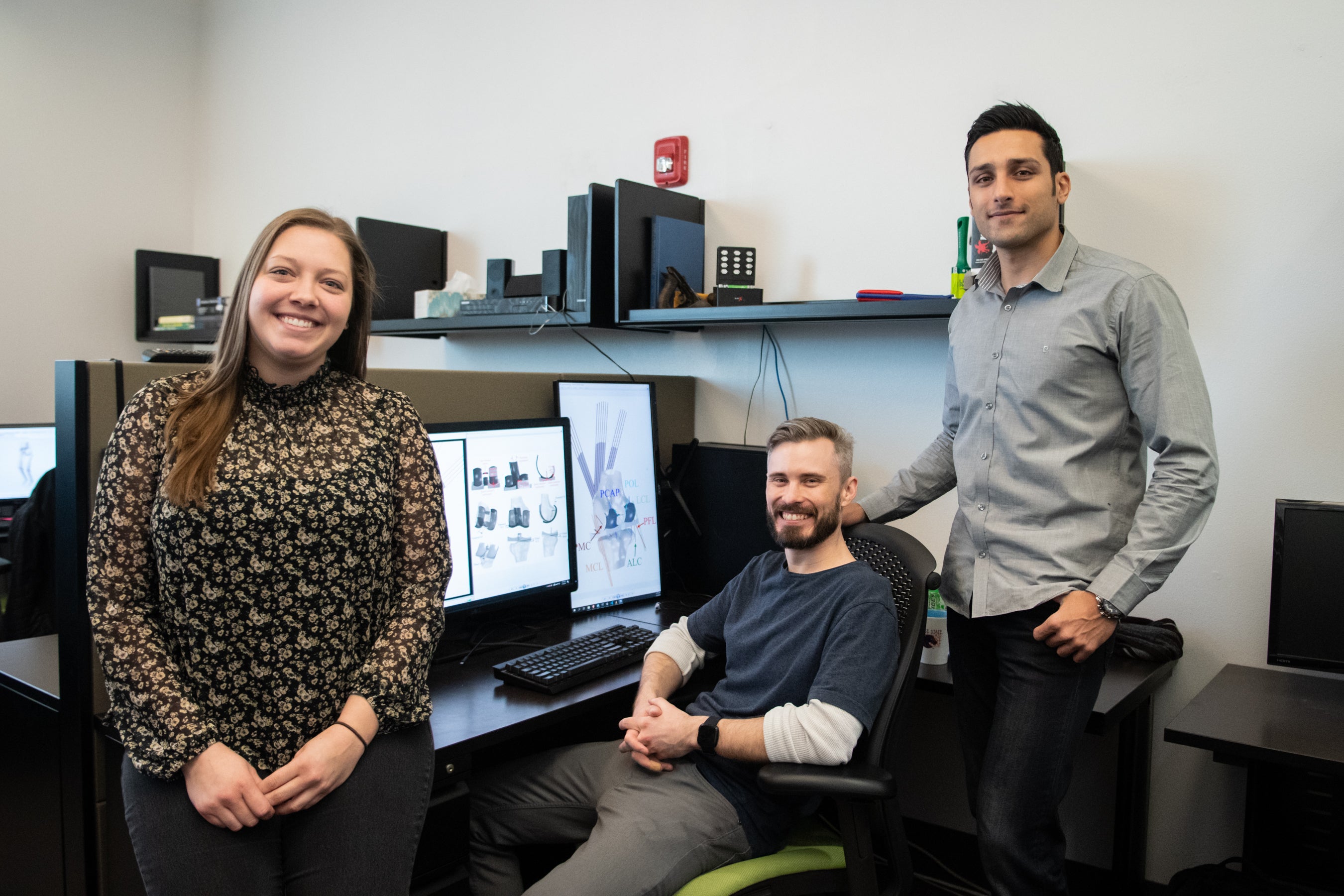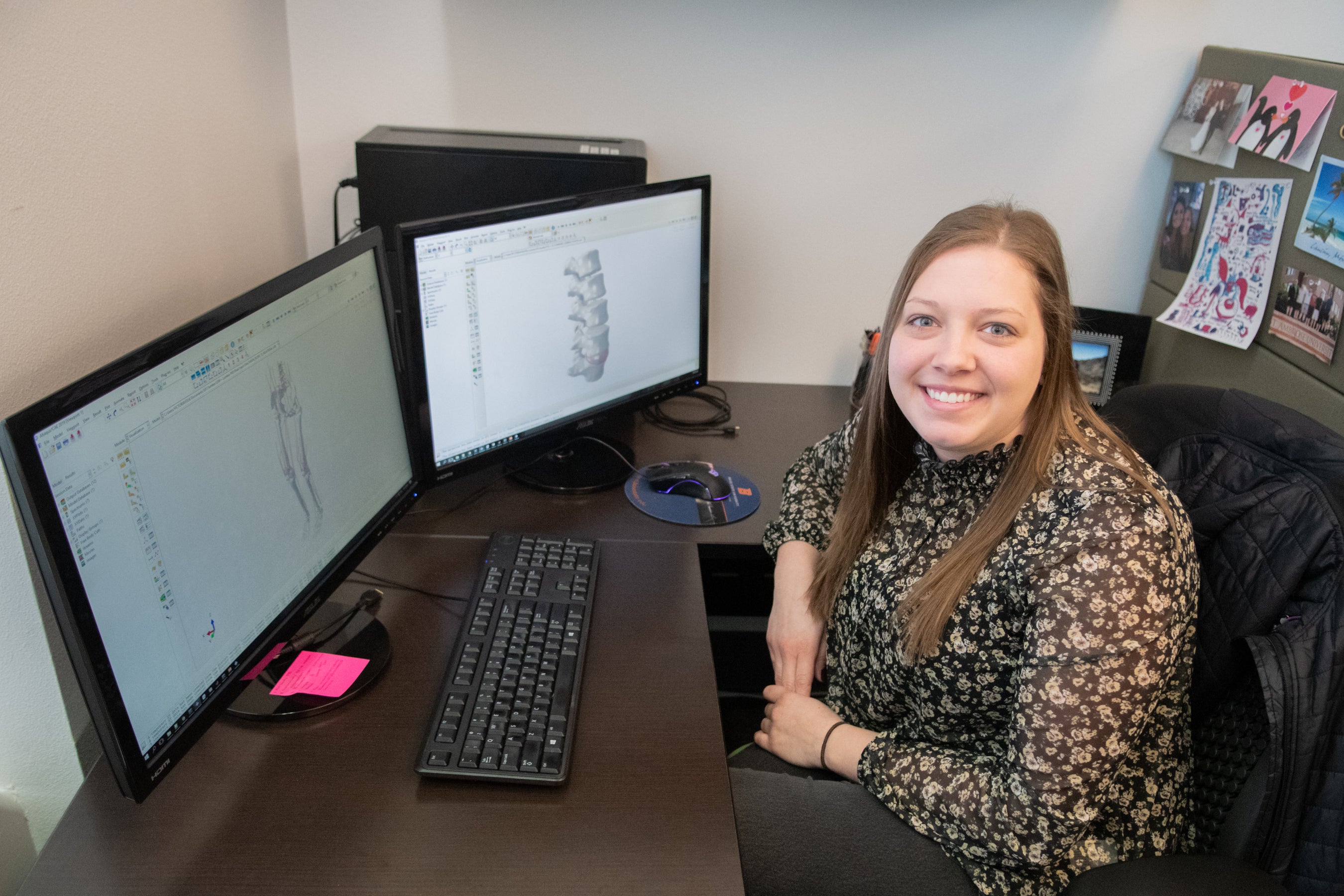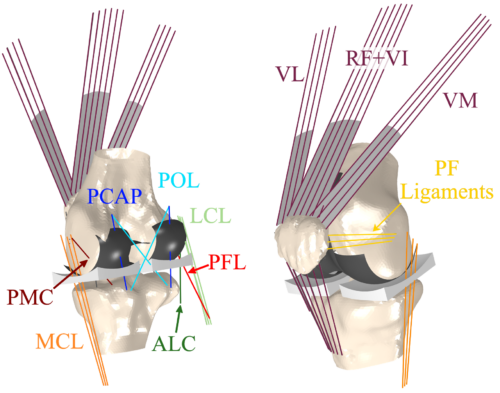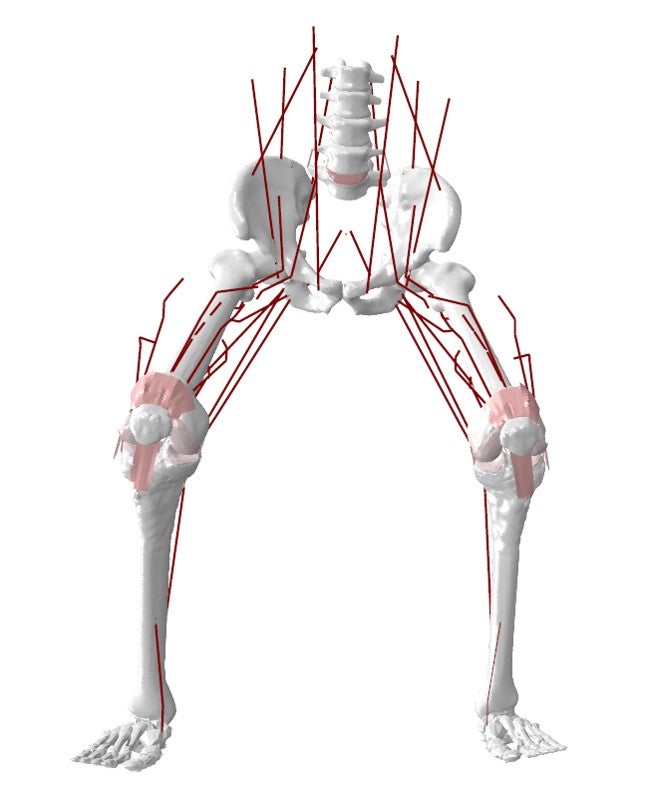
Computational modeling of human anatomy and skeletal structures has advanced so much in the past few decades it seems almost unreal, yet three Boise State students are pooling their interdisciplinary abilities to push it even further.
Though they are all doctoral students, Victoria Volk, Kalin Gibbons and Vahid Malbouby are from diverse programs and backgrounds. Volk is a former certified nursing assistant from central Illinois who studies materials science and engineering; Gibbons was born in Alberta, Canada, and is in Boise State’s computing program; and Malbouby came from Iran to focus on biomedical engineering.
Instead of separating these three researchers, their individual knowledge and interests make it possible to tackle nuanced problems together, such as the modeling of joints affected by osteoarthritis. Osteoarthritis is a disease that harms the joints where cartilage has begun to break down, and according to the Center for Disease Control it affects over 30 million adults in the U.S.
Brought together by assistant professor of mechanical and biomedical engineering Clare Fitzpatrick, the students work in the Computational Biosciences Laboratory within the College of Engineering. The lab specializes in applying computational models to understand the mechanisms of disease, injury and degeneration, in order to design targeted treatment options and surgical interventions to address clinical issues and athletic performance.
“Solving problems in human health, injury and joint disease is not something that can be effectively accomplished when siloed within a traditional discipline,” explained Fitzpatrick.
That’s exactly why Volk, Malbouby and Gibbons are determined to combine their expertise to revolutionize treatment and prevention of osteoarthritis.
“We’re looking at long-term osteoarthritis,” said Gibbons. “We want to get better at being able to predict the people who are going to develop osteoarthritis. Also, if we can know how far along their disease progression is or predict their future progression, then we can try to tailor different kinds of management strategies or different procedures to halt or reduce further damage.”

To be able to do this, the three are handling different elements of the project. Volk is working with collaborators at the University of Denver to develop a computational full lower-limb model, from the lumbar spine down, with skeletal structure and soft tissues, like cartilage and muscle. She sees this digital model as being an essential stepping stone to advancing research not only pertaining to osteoarthritis, but to all biomedical research.
“You could use it to test a surgical intervention on a specific joint, a joint replacement, or a new therapy technique, and you could do all of that within one model,” said Volk.
As a former nursing assistant, she wants to know that the research she is doing will make a difference in the lives of patients.
“I know people who’ve undergone hip replacements and had problems with them, and then had back problems. So being able to figure out something that can actually help them is the motivation,” said Volk.

Gibbons is using his computing and coding abilities to develop computational models more efficiently. For example, the current workflow to get from magnetic resonance images to an actual computational model that can be used to predict outcomes can take weeks, which is impractical for the clinical setting.
“We’re reducing the turnaround time to actually get those predictions to the point that a patient could come in and get their joint scanned, then clinicians could run it through a quick battery of software, and have an optimal, targeted patient treatment plan within hours or days,” said Gibbons.
Meanwhile, Malbouby is working on two branches of research. One is to build a novel computational framework from a patient database that takes into account the mechanical, structural and biological factors that contribute to osteoarthritis.
“I’m going to look into each factor from a statistical point of view, and see how much each one of these factors contribute to the outcome and to the progression of the disease. They each have been studied pretty well individually, but we don’t have a framework that puts all of them together,” said Malbouby.
The second goal of his research will be to design and implement mechanical and biological experimental testing on cartilage, which Malbouby explains will inform and validate the computational model to make better predictions.
For Fitzpatrick, making sure that her students get the opportunity to conduct hands-on, interdisciplinary research during their education is essential to preparing them for life after graduation.
“Careers in general are becoming more interdisciplinary, and this is particularly true for anyone working in biomedical engineering. Even if your day-to-day tasks are primarily mechanical engineering, or material science, or computer science, you still need to be able to communicate effectively with the biologists, kinesiologists and clinicians around you that will be taking your device or software and applying it to their patients,” said Fitzpatrick.
“Hands-on, interdisciplinary research gives students an awareness of these constraints and prepares them with the communication and technical skills to have informed interactions with their colleagues.”

The students are recipients of highly prestigious awards that support them in their research and education. Volk and Gibbons were awarded National Science Foundation fellowships, and Malbouby is funded through a National Institutes of Health grant through Boise State’s Center of Biomedical Research Excellence.
-By Brianne Phillips